The word ghee is the Hindi word associated with fat. In India, ghee is mostly recognized as desi ghee which means Real Ghee. Desi word is associated with the organic or natural term. Real Desi Ghee, also called clarified butter, is a good and healthier choice over any cooking oil and is often used in Indian and Middle Eastern dishes.
To define ghee briefly, it is primarily the milk fat that is the residue that gets after the water evaporation, and milk solids are removed to get clarified golden nectar called Ghee. Desi ghee is prepared by simmering until the milk solids are slightly browned which promotes a nutty flavour to the final product.
It is very aromatic and has a nutty taste. Ghee can survive at room temperature but can easily be melted if needed. Desi cow Ghee can be made at home from cow milk or purchased online. The following will provide you with a little more information about the Vedic properties of ghee.
Ghee can be made from the milk of cows and buffalos. But the Vedic Ghee can be made from desi cow milk from the indigenous breed. However, to make pure cow ghee with the Vedic ghee-making process, we need to follow the traditional method of making ghee, where we do not use any artificial equipment or supplement in the cow diet.
What is Real Ghee (Vedic Ghee)?
Vedic Ghee – refers to ghee properties described in Ayurveda. According to Ayurveda real ghee is what we obtain through the traditional ghee-making process, where every step is necessary and authentic. In villages of India people still use traditional ghee-making processes to obtain ghee from milk. The thing that they keep in mind are:
- Maintain the quality of milk: They offer green-leafed food in which they do offer soya and other content so that cows could have a healthy diet. Also, while making ghee they boil the milk till its thickness goes over the normal cream. They do not use the cream for making ghee, instead, they use curd root to obtain Desi Cow Milk Ghee.
- Feed the Calf too: Only 70% of milk is obtained and 30% left for the calf.
- Use earthen pots and wooden churners: Traditionally people of India, use earthen pots to boil the milk, make the curd, and use wooden churns to obtain unsalted cultured butter from the curd. They ensure the purity of the butter. No chemical is used in this process.
- Say no to chemicals or injections: Real ghee can be obtained from organic grass-fed cow’s milk only. They don’t require any chemical or injection to produce extra milk. People collect only what a cow can easily give and save a satisfying amount for her calf.
Test to check the purity of desi cow ghee:
Several tests can be done to check the purity of ghee at home. Some of these are mentioned below:
- Heat test: One of the simplest ways to find the impurity of ghee is by heating a teaspoon of ghee in the vessel. While melting the color of ghee is changed to dark brownish, then it is pure ghee. If it takes time to melt and the color turns yellow then proves that it is adulterated.
- Palm test: Take a teaspoon of ghee at your palm, due to internal heat on the palm. If the ghee melts then it is pure. So pure ghee melts at body temperature.
- Double-boiler check: To check the traces of coconut oil in ghee, melt the ghee in a glass jar using a method of double-boiler and pour it into the glass jar. After that, put the jar in the refrigerator for some time. If the solidification of ghee and coconut oil is done in a separate layer then ghee is impure.
- HCL test: Heat a tablespoon of ghee in the test tube, add an equal proportion of concentrated HCL with a little sugar. Shake well and wait for five minutes and the pink or red colour lying down at the lower layer shows that ghee is impure.
- Check off starch in ghee: In melted ghee add a few drops of iodine, if the color turns purple that means ghee is adulterated with starch.
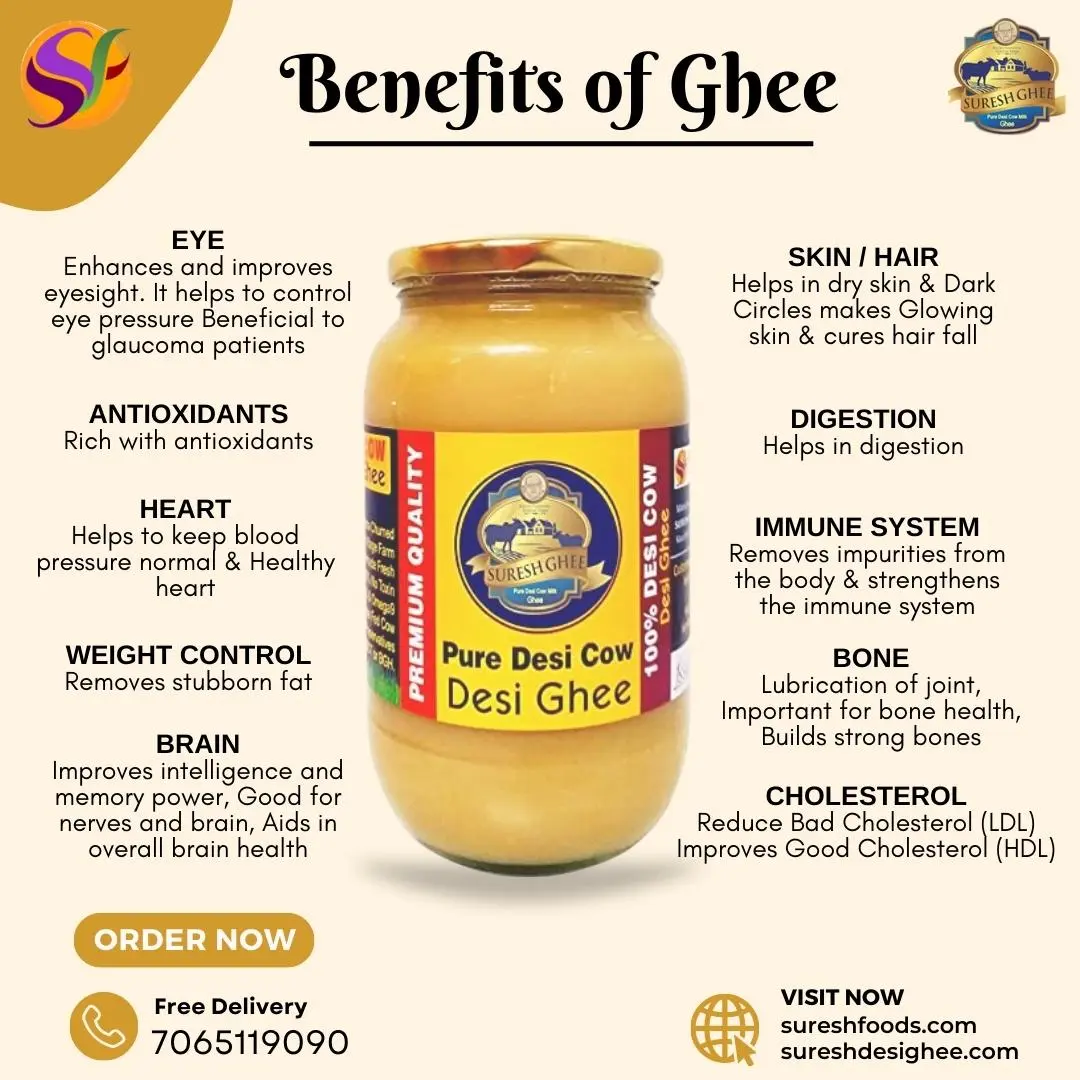
How to make Vedic Ghee?
- Pure Desi Cow Milk is boiled in Earthen Pots.
- Boiled Pure Desi Cow Milk is overnight converted to Yogurt in Earthen Pots.
- Yogurt is churned using Wooden Churners.
- Butter (Makkhan – मक्खन) so obtained is warmed to get this rare ghee
- Extract only Premium Butter from Yogurt.
- Finally, Premium Quality Vedic Ghee is obtained.
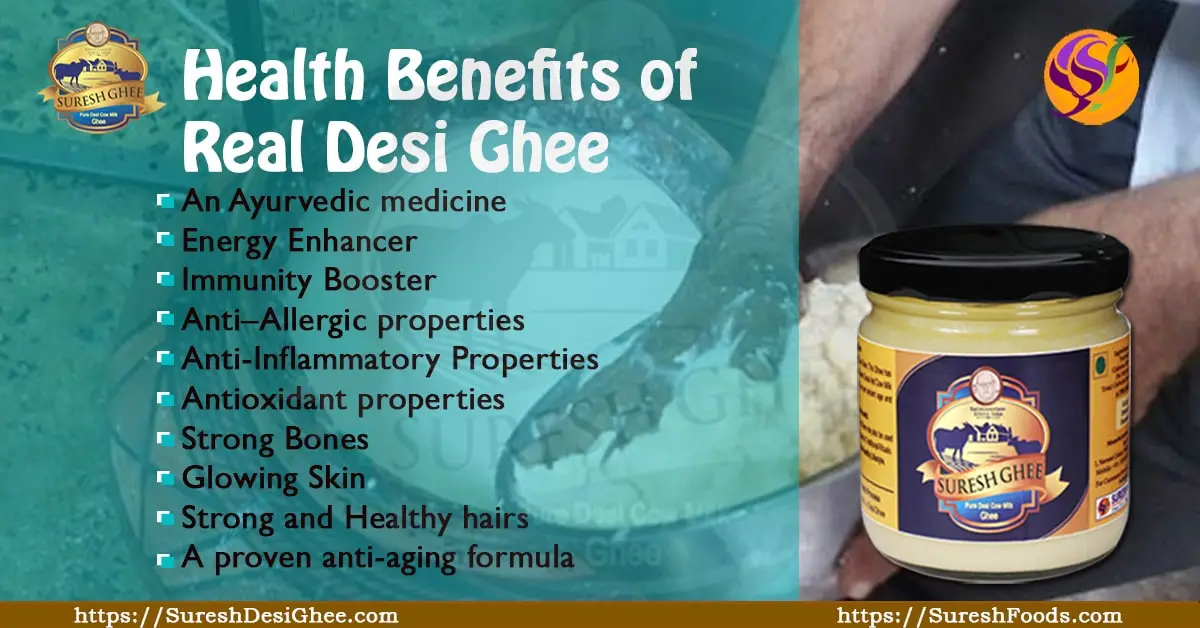
Buy cow Ghee Online: Order Now. Free Shipping
Properties of Vedic Ghee
- A Full range of short-chain fatty acids, medium(MCFA) and long-chain fatty acids(LCFA), Also Include both saturated and unsaturated fat.
- Vedic ghee also contains Omega 3 and Omega 9 fatty acids.
- Vedic ghee is enriched with 9 phenolic antioxidants.
- Vedic ghee is supercharged with all fat-soluble vitamins like vitamins A, D, E, and K2.
- Due to its natural authentic way of making where each step has its own importance, this Vedic ghee is loaded with numerous other health supplements and minerals.
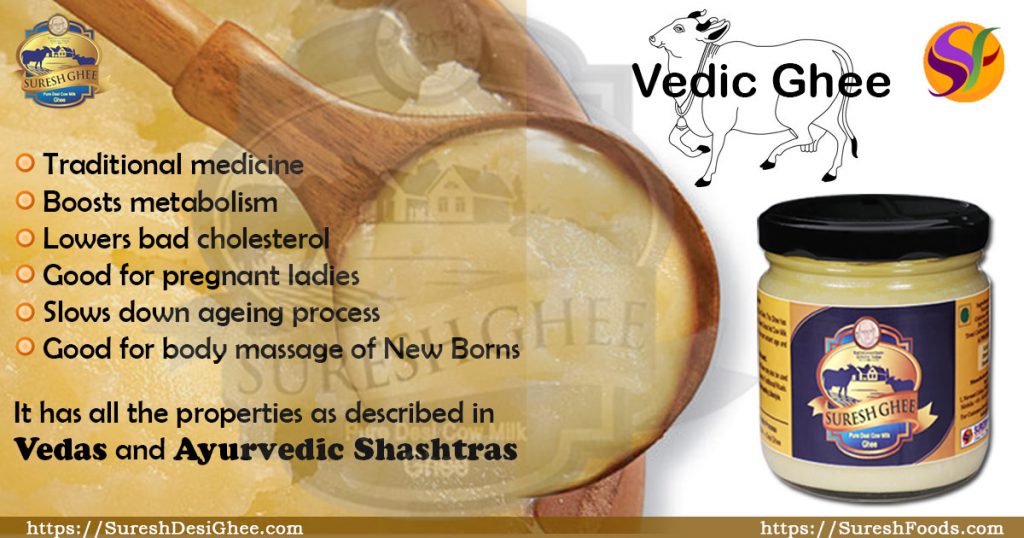
Why pure cow ghee is costly?
Vedic Ghee ( pure cow ghee) is more costly than the ghee prepared with the commercial methods where companies use machines and chemicals to prepare ghee. In the Vedic ghee-making procedure, we make ghee by hand churn method. 27-28 Kg of milk is used to make just 1 Kg of ghee plus manual labour. Which makes the Ghee price a little more expensive than the other ghee available in the market.
Medicinal Properties of Vedic Ghee
- In ancient India, Vedic Ghee was especially suggested for those who have an injury. Vedic ghee is popular for the grade of Ropana- healing, and its results in facilitating recovery from injury.
- As per Ayurveda, if a person is suffering from a chronic peptic ulcer or gastritis, Vedic ghee should be used to cure that ulcer internally in the intestinal part. It acts wondrously on bedsores for adults or weak immunity people.
- Vedic ghee can be very effective for broken bones and recovering wounds. It is highly impactive for all types of skin problems. When used on the skin, Vedic ghee offers the softness and moisturizes, and acts as an anti-ageing agent.
- Vedic ghee is remedies for wounds, painful ulcers, insect bite areas, herpes, leprosy, injuries that occurred by heat or fire, and vulnerable wounds by external reactions as per the classical texts of Ayurveda.
- Ghee has been found to lower cholesterol due to the presence of CLA (conjugated linoleic acid). CLA has been known for boosting metabolism, enhancing muscle strength and endurance, and diminishing body fat.
- The high concentration of butyric acid in Vedic desi ghee is useful to promote the immune system and is also recognized to help fight off cancer cells.
Desi ghee prepared from the traditional bilona churn method has all the properties of Vitamin A, D, E and K2. It also has DHA for brain development and CLA for weight management. It also has anti-inflammatory and antioxidants to build immunity.
Ghee prepared by Vedic bilona churned method is a rich source of butyric acid that is a short-chain fatty acid. This acid is connected to an immune response that can help in lowering inflammation and improving the digestive system.
Desi Ghee is prepared by the traditional method used in ayurvedic medicine, this Ghee is widely recognized in various Ayurvedic massages & supplements.
FAQ
Conventional ghee may consist of additives and artificial colorings, possessing potential harmful effects to the body. Contrarily, A2 cow ghee is well-renowned as a healthier substitute, being free from such harmful additives and providing a richer nutrient profile. Conventional ghee, with its potential to spike in the cholesterol and fat levels, is concealed by the nutritional superiority of A2 ghee. A2 ghee, obtained from A2 milk, boosts a thicker consistency and is recognised for its superior flavor and digestive benefits. Processed through the conventional method of heating butter from A2 milk on a minimal flame for an extended period, A2 cow ghee stands out as a preferable choice.
A2 Desi Cow Ghee emerges as the purest form of ghee, created exclusively from the milk obtained from desi cows. The conventional bilona or churning techniques are implemented in its preparation. Primarily, the milk has to go through curdling and is later subjected to either hand-churning or motor-churning. Finally, the collected butter is heated to harness the coveted cow ghee of desi A2.
This variant is addressed as a healthier alternative for the conventional ghee due to its primary ingredient, A2 cow milk, which is deficient in the A1 protein, particularly β-casein. The A1 protein is considered to be harmful to the body and has unfavorable effects, particularly for individuals with lactose intolerance. Well-renowned as the most nutrition-dense option appropriate for all age groups as A2 cow ghee is conveniently available online.
A2 Desi Cow Ghee is particularly created from A2 cow milk, free from additional ingredients, harmful additives, or chemicals. Its distinctive characteristics possess:
Yellowish Color: With the presence of Beta-carotene which is a coloring pigment inherent in A2 cow milk, conveys a yellowish effect to the ghee. Beta-carotene is a carotenoid catering as a precursor to vitamin A.
Grainy Texture: A top notch prized feature with the grainy texture is accomplished through the meticulous production process including a low flame, adding to the ghee’s overall quality.
Rich Aroma: A2 cow ghee provides a rich aroma, improving its compatibility along with a diverse range of meals, granting a flavorful complement.

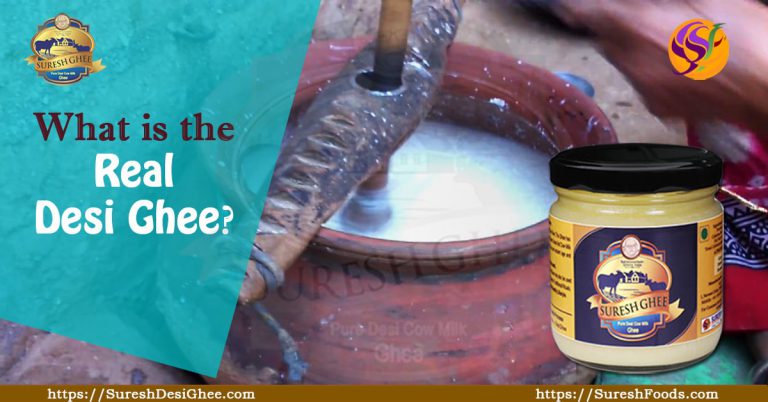

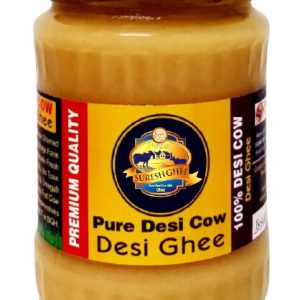
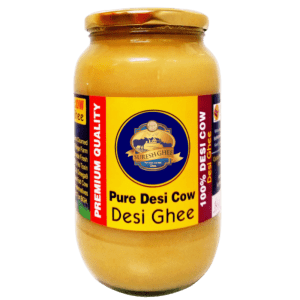
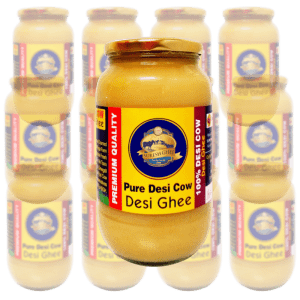
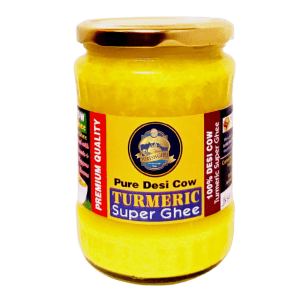
 WhatsApp us
WhatsApp us
Naveen m...